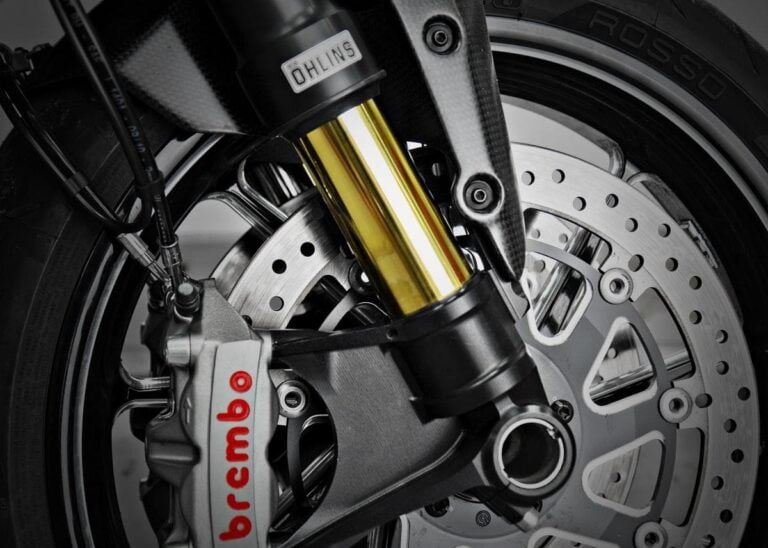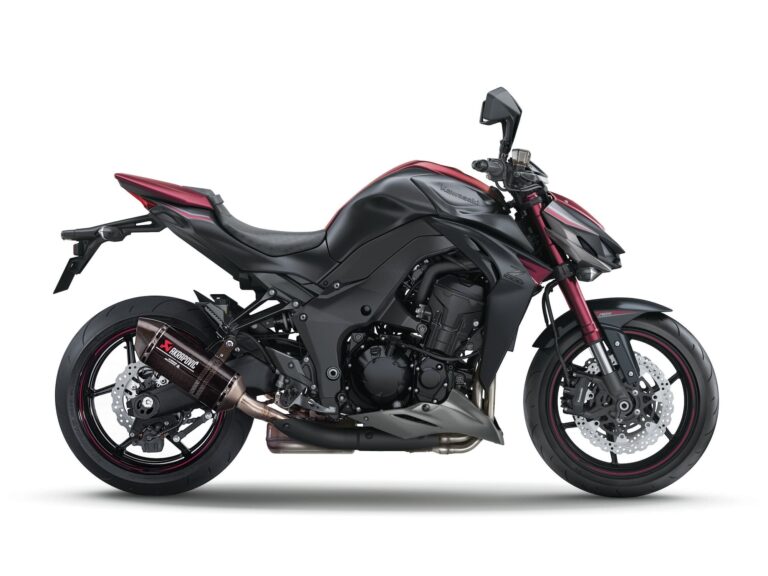This is an edited and updated archive copy of an article by Gordon Jennings, originally published in Motorcyclist magazine, October 1996. Opinions about oils are like brains; everyone has one (this is my more respectful version of the old adage).
I came across a reference to this article while researching another one, and was miffed to find that it isn’t available online. It’s a good article that dives into a lot of detail about oil additives, API and SG ratings, questions about synthetics, and more.
I’m no oil expert, but I’m an engineer, and so why not become an oil expert. In an effort to share my sources, I’m reproducing this one here.
I have corrected the original article for typos and grammatical errors, and added my own emphasis and graphics.
PS I won’t necessarily agree with everything in the article after I’ve finished learning, but it does come from a point of experience and wisdom. I’ve added caveats where relevant.

Are you obsessed with motorcycles?
Well, I am. That’s why I created this site — as an outlet. I love learning and sharing what others might find useful. If you like what you read here, and you’re a fraction as obsessed as I am, you might like to know when I’ve published more. (Check the latest for an idea of what you’ll see.)
Overview of Motor Oils
Here’s the bottom line when it comes to motor oils: you really can’t go wrong by following the recommendations given in your owner’s manual.
Your motorcycle’s maker has tested its engine with a crankcase full of the specified oil, or one with the same API and JASO rating (Editor’s note: see our article on motorcycle acronyms for those and more).
You at least can be sure that particular oil will do the job. There may, however, be better oils out there, and the oil specified in the manual might be expensive, difficult to get, or just no longer in production.
The API’s ratings once went from “SA” (guaranteed to be oil) through to “SE” and eventually to “SE/CC” (you can’t drive a nail it.) Today, the API system has fewer performance grades, only “SH” and “SG” for spark-ignition (i.e. non-diesel) engines and an “SH/CD” rating for oils for diesel engines. Oils with these API markings have been certified for today’s engines, which are in turn constructed with these oils in mind. (Updated note: As of 2024, API has an SP rating for engine oils.)
One thing to bear in mind is that engine oils are compounded not just for lubrication, but also for fuel economy. Oils have always been compounded with a thought for fluid drag, but only in the last few decades have fuel economy and emissions become priorities. The API has two economy ratings: “energy conserving” and “energy conserving II” for motor oils that give a 1.5% and 2.7% (respectively) reduction in fuel consumption compared with a reference oil. Oil can reduce fuel consumption? Great!
It gets better. Energy conserving oils don’t just improve economy, they also increase horsepower! After combustion inside a piston, there are a few ways that thermal and mechanical energy is lost before it makes it to the wheel. Most energy loss comes from intake and combustion inefficiencies, and some is also lost in the drivetrain. But the rest is lost to fluid drag, most of which is in the piston moving up and down the cylinders. And oil viscosity has huge impact on fluid drag.
Editor’s note: If you have just read up to here and jumped up and thought “I’m going to buy an energy-conserving oil! I’ve seen those! Moar power!!1” just hold up. Energy-conserving oils aren’t suitable for most motorcycles as they have wet clutches. If your clutch is bathed in oil, using a too-slippery oil will make your clutch slip. You can use an energy-conserving oil in a motorcycle with a dry clutch like a BMW R nineT or older Ducati.
We think of “friction” as being drag between two surfaces that are in contact, but they don’t have to actually be in contact. Inside a cylinder, there is a thin film of oil between the piston and the cylinder walls. This oil film is a source of friction itself called “viscous drag”, similar to the kind of drag that you’d feel if you were waving your hand about in water; the quicker you wave it, the stronger the drag becomes. The oil helps the metal not stick, but it’s also a source of drag and thus friction.
A good oil should be “oily”
The most important property of oil is that it be “oily”, i.e. that it lubricates. If you put any liquid between a piston and cylinder wall it will reduce total friction between the two surfaces. The degree to which friction will be reduced depends on the liquid’s viscosity. But maple syrup and motor oil of essentially identical viscosity do not lubricate equally, which you can see by rubbing a bit of each between your thumb and forefinger.
So what is “oiliness”? Sticking to this non-scientific term, it basically means the degree to which an oil clings to a surface, and repels other surfaces covered in the oil.
If “oiliness” were the only quality to be considered in choosing motor oils, we’d be squeezing all our oil from castor beans. Castor oil, which is what we used to smell at motor races, is the oiliest of oils. In some ways, it’s still the ultimate lubricant. It does oxidize too readily, however, forming gums and varnishes that stick to piston rings and fouls spark plugs. In a running engine, castor oil goes right to work glueing piston rings in their grooves and slathering gum and varnish everywhere. It’s great, but if you can survive without it, you would, and so most do.
But castor oil, a mixture of ricinoleic and triricinoleic glycerides, plus 10-12% of other fatty acids, is still one of the best lubricants for 2-stroke racing engines. Castor oil clings to metal with such tenacity you can’t remove it except by machining it off. It is an extremely effective film lubricant.
In an engine, oil forms a hydrodynamic wedge between surfaces. This wedge keeps pistons and bushing-type bearings from making metal-to-metal contact. Viscosity pulls the oil between a moving piston and its cylinder wall, or a shaft and a bearing, and pressurizes the gap. The pressure increases with viscosity and speed, and a well-designed engine almost totally prevents scrubbing contact.
We need to qualify that with “almost” because hydrodynamic action is not present in an engine at start-up, and hydrodynamic action collapses around the pistons and rings at the end of their strokes. Under these conditions, parts are protected only by film lubrication, which is provided by the dipolar nature of the oil molecules. (By “dipolar” I mean the molecules behave like tiny magnets and adhere to each other and to metals.)
Oil additives: History, myths, and benefits
One of the great improvements in motor oils came in the 1950s, when when the detergent/ dispersant additives developed for diesel engines became available for general use. Unfortunately, these brought with them bad consequences for old, high-mileage engines. In those, the detergents, by just doing their job of cleaning things, sometimes dislodged huge clots of oxidized oil filth. These clots of goo then clogged filters and oil passages, causing engine failures. These engine failures apparently caused by detergent-enhanced oils gave the oils a bad name, with the results that some old-timey people still buy and use straight non-additive oils, if they can find them.
One of the first oil additives was a spoonful of sulfur that old-time truck operators tossed into axle and transmission housings. The sulfur reacted with steel to give the gear teeth an iron sulfide film. The film was important because the relative speeds between meshing gears are too low to form a fluid wedge strong enough to resist the extremely high gear-tooth loads.
Engines also have points at which load can exceed the carrying capacity of the oil fluid wedge. Take the tiny contact area between the exhaust cam and follower, for example. The load there rises to roughly 1500 pounds for every ounce of valvetrain weight (roughly two metric tonnes per 100g) at high engine speeds. Full throttle adds 80 pounds of load for every square inch of valve head area (5 bar), meaning the load focused on the cam/follower can reach pressures in the order of 20,000 pounds per square inch (over 1000 bar).
Cams would have to spin much faster than they do (half crank speed) to work up a fluid wedge capable of carrying such a high load. So the job has to be done with film lubrication, which means a more viscous oil, one with special properties (e.g. castor oil) or an extreme pressure additive. It’s obvious that film lubrication is important. Where some of us newbies go wrong is in jumping to the conclusion that experts who compound motor oils have overlooked this very point. Maybe they know what they’re doing…
Bogus oil additives and why avoid them
Most motorcycle or car store shelves will have a selection of flasks filled with bogus liquids making all kinds of claims. These various fluids definitely can reduce the friction in your wallet enough to make money slip out of it easily, but probably can’t do anything else. About the best you can hope from bogus oil additives is that it will either be more of the same additives already in good-quality motor oils or at least not get in the way of the additives that can do something useful.
Film-condition additives usually are chemically and/or thermally reactive. The sulfur- and phosphorus-based compounds react with iron to form slippery iron sulfides, as previously noted, or wear-resistant iron phosphides. Fatty acids, like those in castor oils, react with iron to make low-friction iron soaps.
Thermally reactive “liquid metals” like molybdenum dithiophosphate, are oil-soluble chemical compounds; molybdenum sulfide, on the other hand, is a cheap dry-slide lubricant sometimes used in greases. If you put MOS or other dry-slide lubricant powders like colloidal graphite in motor oil, these solids may settle or filter out. Worse, they may become a barrier blocking the more effective reactive additives.
Editor’s note: To clarify — molybdenum dithiophosphate is a good liquid metal to add; molybdenum sulfide is not.
The liquid metals (like molybdenum dithiophosphate) dissolve in oil, like salt in water, and remain in solution at all normal engine operating temperatures. But when friction heats the liquid metal compounds they come apart and their metallic component is plated on the hot spot. This stops the most potent, least obvious wear process in today’s filter-protected engines: direct, scrubbing contact between a cam and follower, gear teeth, etc.
But this contact results in wear largely due to friction welding: Friction melts pinpoint areas of metal on both sides of the contact area, and they weld themselves together. These minute welded particles then break away [Ed: as the oil breaks down]. After enough of them are carried off by the oil, the parts need replacement.
The role of liquid metals — usually molybdenum, tungsten, or zinc compounds — is both to interfere with friction welding and to sacrifice itself to the wear that would otherwise devour engine parts. Unfortunately, phosphorous compounds degrade catalytic converter performance, so the feds limit the number of additives like zinc dialkyl dithiophosphate (often referred to as ZDDP) in motor oils. But in nearly all instances, there is enough to last from one oil change to the next.
Editor’s note: I found this confusing so went and clarified. So are liquid metals good or bad for your engine? The short answer is that liquid metals are good, but a low quantity of is worse than none at all. Since they interfere with catalytic converters, the amount of liquid metals like ZDDP in motor oils has reduced over time. If you don’t change your oil often enough, you risk parts failure that’s caused by ZDDP bonding to, then breaking chunks away of, your internal parts.
The benefit of better air filters
In the years before we had effective micron-level air and oil filtering, abrasive engine wear was a problem. The typical spark-ignition engine sucks in 10,000 litres of air for every litre of fuel it consumes. If you don’t filter that air, it carries grit into your bike’s engine post-haste. The larger particles do little damage unless they get caught between a valve and its seat, pitting both severely.
Virtually all dust particles are silica or silicon oxide, an extraordinarily hard substance with plenty of sharp edges. Engines with inadequate (or non-existent) air filters eat a huge amount of this grit. The good news is that most of the particles leave with the exhaust gases. The bad news is that unfiltered dust particles that stay can do severe damage, whether it’s in the wrong place or carried around in the wrong oil.
Modern air and oil filters trap just about everything larger than a micron (0.001 mm, or 0.000039 inch) in diameter. Particles of that size are enveloped by the oil film separating an engine’s moving parts. Even a very light oil provides this protection. SAE 5 seems watery, but it has a film depth of not less than 0.001 inch, deep enough to submerge particles smaller than 26 microns.
Abrasive wear was a bigger problem back when the typical motorcycle air filter was a coarse screen capable of stopping nothing much smaller than pea gravel. The old gravel strainers gave free passage to the 20-micron grit that does the worst damage, especially to piston rings.
Fine grit was (and still is) a great killer of roller cranks. Grit becomes embedded in bearing cages and makes them depressingly effective crankpin grinders. You can prevent this kind of damage by using the thick oils, SAE 30 and above, envisioned and recommended by the people who built these old engines.
So this brings us to the next question — what is the best viscosity of oil to use? Great question. First, I encourage you to ask that question on every forum or in every Facebook group you find. (Kidding. Do not.)
Oil viscosity and grades
Viscosity is the second most important attribute of a good oil, other than its general oiliness.
Thick, high-viscosity oils are good for enveloping grit. They also do a great job of sealing and cushioning, which are two important functions of all motor oils. The aluminium piston alloys in use circa 1960 had high expansion rates and poor high-temperature strength. Accordingly, they needed to be surrounded by thick oil, to seal the fire trying to blow past the generous clearances — and to keep them from rattling in their bores.
Thick oils spread the concentrated loads between roller bearings and their races. The mechanism of rolling-element bearing failure usually is “brinelling,” fatigue-related flaking, of the inner bearing race. Under load, the race under the roller (or ball) yields minutely as the bearing turns, just as a paved street yields to the weight of a passing truck. And in time the bearing race, much like the street, begins to break up.
Plain insert-type bearings can also fall victim to fatigue failure. You can bring about their early demise by feeding them a too-thick oil, which will turn into a too-thin oil in the bearing. The oil in plain bearings, whether connecting rod inserts or the floating bushings in a supercharger, is heated by fluid shearing. If the oil’s viscosity and bearing clearance are properly matched, there will be sufficient oil flowing past the bearing to keep it cool.
When you pour SAE 40 into an engine designed for SAE 10-30, you may intend to protect its bearings with thicker oil. But the increased oil viscosity, and resulting reduction of flow, can overheat the bearing. The metals used in plain bearings — copper, lead, and aluminium — typically lose half their ambient temperature strength at 93 degrees C (200 degrees F). Copper/lead bearings are stressed near their elastic limit at redline crank speeds, even with crankcase oil temperatures below 120 degrees C (250 degrees F). Pour in some thick oil, or a “mouse milk” viscosity index improver, and you’ll reduce the bearing’s oil flow, which will make it hotter and may cause it to fail.
Engine oils are viscosity-rated by subjecting them to the arcane arts of viscometry at 40 degrees F, then heating them and repeating the test at the boiling point of water (210 degrees F). When you see a 10W30 rating on oil, the “W” means the oil’s base stock has actually been tested down to zero degrees F (-32 degrees C) with a cold-cranking simulator. It is assumed, for purposes of viscosity, that motor oils are “Newtonian” in that their loss of viscosity with temperature (meaning that their rate of loss is fairly constant.) The rate of loss is given as a viscosity index number, and in this respect, some oils are better than others.
Multi-grade oils are made so by chemical additives called “viscosity index improvers.” These additives contain either colloidally dispersed long-chain molecules that dissolve into true solution as temperature rises or spiral molecules that open up and get longer with increases in temperature. Both of these actions “thicken” heat-thinned oil. Add the right viscosity index improver and you get, for example, an oil that tests like SAE 10 at ~30F (about 0 degrees C), but looks more like SAE 30 at 210F (about 100 degrees C). A multi-grade oil doesn’t thicken with increased temperature, it doesn’t thin as much as a single-grade oil.
One thing you should know about multi-grade oils is that their viscosity index-improving additives will wear out. You can fool mother nature, but not forever: Long-chain molecules shear apart, so the 10-30 oil you poured into your motorcycle’s engine becomes 10-25 oil after a time, then 10-20, 10-25, right down to 10-10 if you cover enough miles between oil changes.
Synthetic vs Mineral motor oils
Over the last couple of decades, we have seen the rise of “synthetic” and “synthetic blend” base stocks in motor oils. The big difference between plain old refined oil and synthetic is the latter is, well, synthesized. When crude oil is refined, it is effectively sifted. The SAE 30 base stock you get in the sifting operation represents an average of molecule sizes, some being larger and others smaller. Shearing in a running engine breaks the big molecules apart faster than the little ones, which reduces the average size of molecules in the oil and thins it.
In contrast, synthetic base stocks’ molecules are uniform in size, having been assembled out of fragments in a molecular stew. Synthetic oils also contain none of the waxes that can block low-temperature flow and none of the instant-sludge crude oil cruds or aromatics that vaporize and drift away the first time a spark plug fires anywhere near them.
The better synthetic base stocks in use today are record-holders on the viscosity index scale. They still need a good squirt of VI booster to qualify as multi-grade oils, but they need less of it than refined base stocks. This is important, as polymeric viscosity index improvers’ long molecules are unstable in shear. The less help your SAE 10W30 motor oil needs to meet its high-temperature obligations, the longer it will be effective.
Good synthetic motor oils also have better non-Newtonian, “apparent viscosity” behaviors. Oil displaying these “kinematically diminished” properties behaves like a thinner oil when rubbing speeds are high enough to build a thick fluid wedge.
Which synthetic oils are best in terms of apparent viscosity? I don’t know, and neither does anyone who lacks a laboratory full of expensive, complicated equipment. I also don’t know which additives, or how much of each, is present in the containers of motor oil — refined or synthetic — you’ll see displayed at dealerships, service stations, and the like. That information is a closely held trade secret.
The best motorcycle oil brands
So after all this talk of motor oils, how do you tell the good from the bad? The bottom line here is, you buy the label on the container; you buy reputation. When you see a plastic bottle labelled “ZOMFG Magic Lube” with small print that says it was packaged by “McDoogle”s Motor and Haemorrhoid products,” put it back on the shelf and reach for something familiar. When I tell you to buy name-brand products, I’m not just sucking up to advertisers. [Editors note to advertisers: I love you.]
Castrol has been making motor oils since we’ve had motors and I don’t think it would knowingly sell you anything that would tarnish its good name. I’ve used Castrol’s motor oils for both racing and street applications, without disappointment. Refined-based GTX, sold super-cheap at supermarkets everywhere, is a very good motor oil and might be better than some higher-priced synthetics.
Mobil long ago began developing synthetic motor oils and put its considerable technical resources to work creating a good one. They came up with Mobil 1, an oil using mostly polyalphaolefin base stock reinforced with a big percentage of polyol ester, the latter being an especially good lubricant in its own right. Mobil 1 probably is today’s best widely available motor oil. [Editor’s note: This is an opinion, and it was dated 1996 so things may have moved. But you can still get Mobil 1, and it’s still good.]
Red Line has made a name for itself as a source of full-synthetic motor oils, and this company, like Mobil, relies on big percentages of polyol esters in its base stocks. My contacts in two- and four-wheeled racing tell me Red Line’s oils are producing excellent results in everything from NASCAR’s stockers to motorcycle GP racing’s shrieking 2-stroke engines.
Keep in mind that your motorcycle was extensively tested with its cavities full of the lubricants specified by its maker. Motorcycle manufacturers don’t test their models on oil specially compounded to keep engines, clutches, and transmissions happy, they instead do the sensible thing and design hardware compatible with the oils they know you’ll be able to find. It’s the smart thing to do, and it works right up to the point where you ignore their advice.
Epilogue
As I mentioned above, this article isn’t one I’ve written — I just edited it, tried to understand it, and fact-checked it as thoroughly as I could. If you have thoughts, I’d welcome them.
So what do we make of the above? Here’s a distilled summary.
- Take the viscosity recommendations of owners manuals seriously. I’ve noticed a lot of Honda manuals recommend 10W-30 (e.g. for the Honda CBR1000RR), so don’t just bung in any old motorcycle oil.
- Good brands of motorcycle oils are worthy of trust, but don’t automatically pay for the most expensive oil from each brand.
- Don’t use “energy conserving oil”.
- Prefer synthetic oils over mineral oils (at least for newer motorcycles).
- Change your oil regularly!







Great artical on motor oils . Thanks
With petroleum based oils we know that they have to include additives which form very long molecules, at high temperatures to maintain the viscosity of the oil. These long molecules are subject to being chopped up in our transmissions which is why the Japanese motorcycles require a special motorcycle rated oil. With a synthetic oil we don’t know this at all because presumably the chemist may be able to brew up a batch of oil which maintains its viscosity without the means of additives. I would like to see some testing of Mobile 1 automotive oil, after 5,000 MI in a motorcycle, to see if it maintains its viscosity, because it is far less expensive than motor cycle mobile 1.